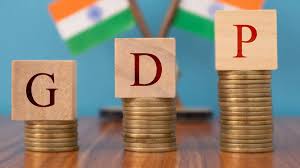| |
|---|
Debjit Mukherjee: Finance Minister Nirmala Sitharaman on Tuesday tabled the Economic Survey 2022-23 in Parliament. The survey estimated India’s GDP growth in FY24 at 6.5 per cent, while the growth for the ongoing year has been projected at 7 per cent, compared to 8.7 per cent in FY22.

At this growth rate, India will continue to be the fastest-growing economy in the world. The GDP growth projections are in line with what economists had predicted earlier.
The survey projected GDP in nominal terms to be 11 per cent in the next financial year, while the real GDP growth is likely to be in the range of 6-6.8 per cent, depending on the global economic and political developments.
The Economic Survey said growth in FY23 was primarily driven by private consumption, higher capital expenditure, stronger corporate balance sheets, credit growth in small businesses and the return of migrant workers to cities.
It also said that the Reserve Bank of India’s inflation projection of 6.8 per cent is not enough to deter private consumption, even though it is higher than the central bank’s upper limit of 6 per cent. The inflation for FY23 is also unlikely to have dampened investment sentiment, noted the Economic Survey.
The survey, however, highlighted that borrowing costs may remain “higher for longer” and entrenched inflation may prolong the tightening cycle.
Another worrisome point highlighted in the Economic Survey was the widening Current Account Deficit (CAD). The survey said CAD may continue to widen as global commodity prices remain elevated. If the CAD widens further, it could put more pressure on the rupee.
However, the overall external situation remains manageable, as per the survey. It noted that India has sufficient foreign exchange reserves to finance CAD and intervene in the forex market to manage higher volatility in the rupee.
The Economic Survey went on to highlight that growth in exports had moderated in the second half of FY24, and slowing world growth and shrinking global trade led to further loss of export stimulus in the second half of the ongoing fiscal year.




